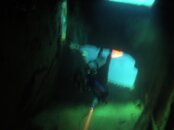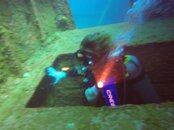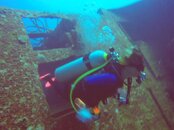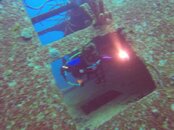Dhboner
Contributor
Swim-throughs and "wreck-throughs" are not the same in my humble opinion. An arch through a section of reef is generally short, has only one possible route and light penetration is usually fair to good. A "wreck-through" can be a fairly lengthy bit of finning, can provide several options which can be potentially confusing (especially if the DM is leading a larger group through and you lose sight of the diver in front) and can be a silty environment where a few lazy fin kicks can result in zero visibility. Recreational/vacation divers rarely have lights with them for daylight reef dives and wrecks, even smaller ones can get very dark in a hurry.
---------- Post added March 11th, 2015 at 04:48 PM ----------
Just to clarify I came up with "wreck-through" to describe what some people seem to have experienced when a DM leads them in through the one side of the hull and out through the other in a relatively straight line.
---------- Post added March 11th, 2015 at 04:48 PM ----------
Just to clarify I came up with "wreck-through" to describe what some people seem to have experienced when a DM leads them in through the one side of the hull and out through the other in a relatively straight line.







